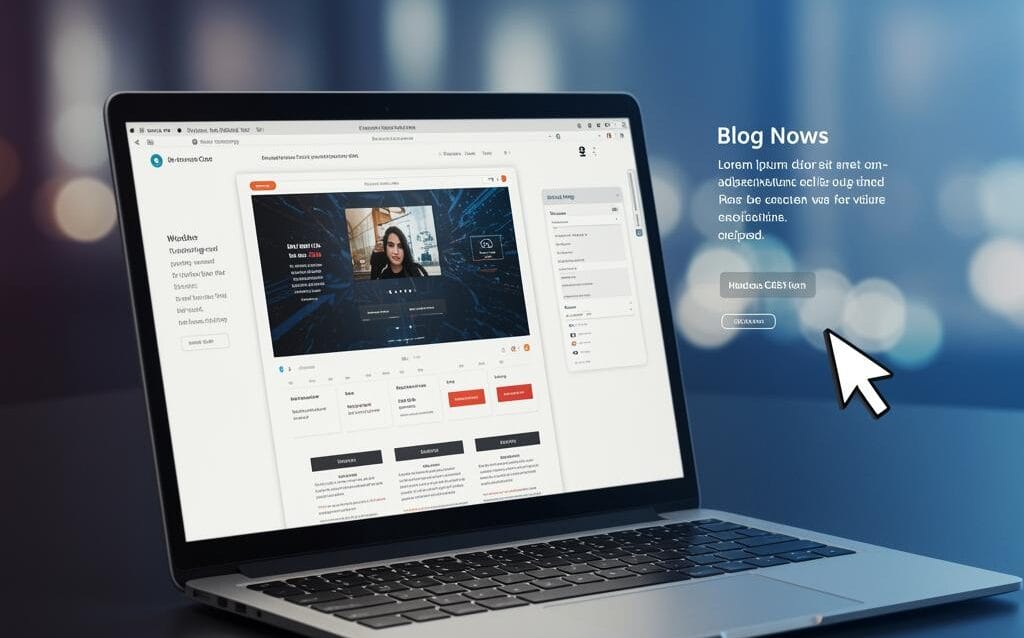Headless CMS: Powering Modern Websites
How Headless CMS Solutions Power Modern Websites
The digital landscape is constantly evolving, and websites need to be more flexible and adaptable than ever before. Enter the headless CMS, a powerful solution that’s transforming how we build and manage online experiences. This post explores how headless CMS solutions empower modern websites to reach new heights of performance, scalability, and flexibility.
What is a Headless CMS?
Traditional CMS platforms couple the content repository (the “body”) with the presentation layer (the “head”). A headless CMS, however, separates these two components. It acts as a content hub, delivering content via APIs to any device or platform (website, mobile app, smart device, etc.). This decoupling offers unprecedented freedom and control over how content is displayed.
Benefits of Using a Headless CMS
Enhanced Flexibility and Omnichannel Delivery
With a headless CMS, you’re not tied to a specific presentation layer. This means you can deliver content to any device or platform, creating a truly omnichannel experience. Whether it’s a website, mobile app, IoT device, or digital signage, your content can be seamlessly integrated.
Improved Website Performance and Scalability
By separating content from presentation, headless CMS solutions allow for faster loading times and improved scalability. The frontend can be optimized independently, leading to a better user experience and the ability to handle traffic spikes effectively.
Future-Proofing Your Website
Technology evolves rapidly. A headless CMS allows you to adapt to new platforms and technologies without overhauling your entire system. Simply connect the new platform via API and you’re ready to go. This future-proofs your website and ensures long-term viability.
Greater Developer Freedom and Control
Developers can use their preferred frontend technologies and frameworks, such as React, Angular, or Vue.js, without being constrained by the limitations of a traditional CMS. This fosters innovation and allows for more customized and engaging user experiences.
Choosing the Right Headless CMS
Define Your Needs and Requirements
Before selecting a headless CMS, carefully consider your specific needs. Think about the types of content you’ll be managing, the platforms you’ll be publishing to, and the size of your team.
Evaluate API Capabilities
The API is the heart of a headless CMS. Ensure the API offers the flexibility and functionality you need to connect to various platforms and deliver content effectively.
Consider Content Workflow and Collaboration Features
A streamlined content workflow is crucial for efficient content creation and management. Look for features like content scheduling, version control, and collaboration tools.
Explore Scalability and Security
As your website grows, your CMS needs to scale with it. Choose a platform that offers robust scalability and security features to protect your valuable content.
Real-World Examples of Headless CMS in Action
- E-commerce: Headless CMS platforms allow businesses to seamlessly integrate product information and create personalized shopping experiences across multiple channels.
- News and Media: Publishers can deliver content to various platforms, including websites, mobile apps, and social media, ensuring wider reach and engagement.
- Government and Public Sector: Headless CMS solutions enable government agencies to deliver information to citizens efficiently and effectively across different devices.
Conclusion
Headless CMS solutions are revolutionizing the way websites are built and managed. By decoupling content from presentation, they offer unparalleled flexibility, scalability, and future-proofing. While choosing the right platform requires careful consideration of your specific needs, the benefits of a headless CMS can significantly enhance your website’s performance and empower you to deliver exceptional digital experiences.

